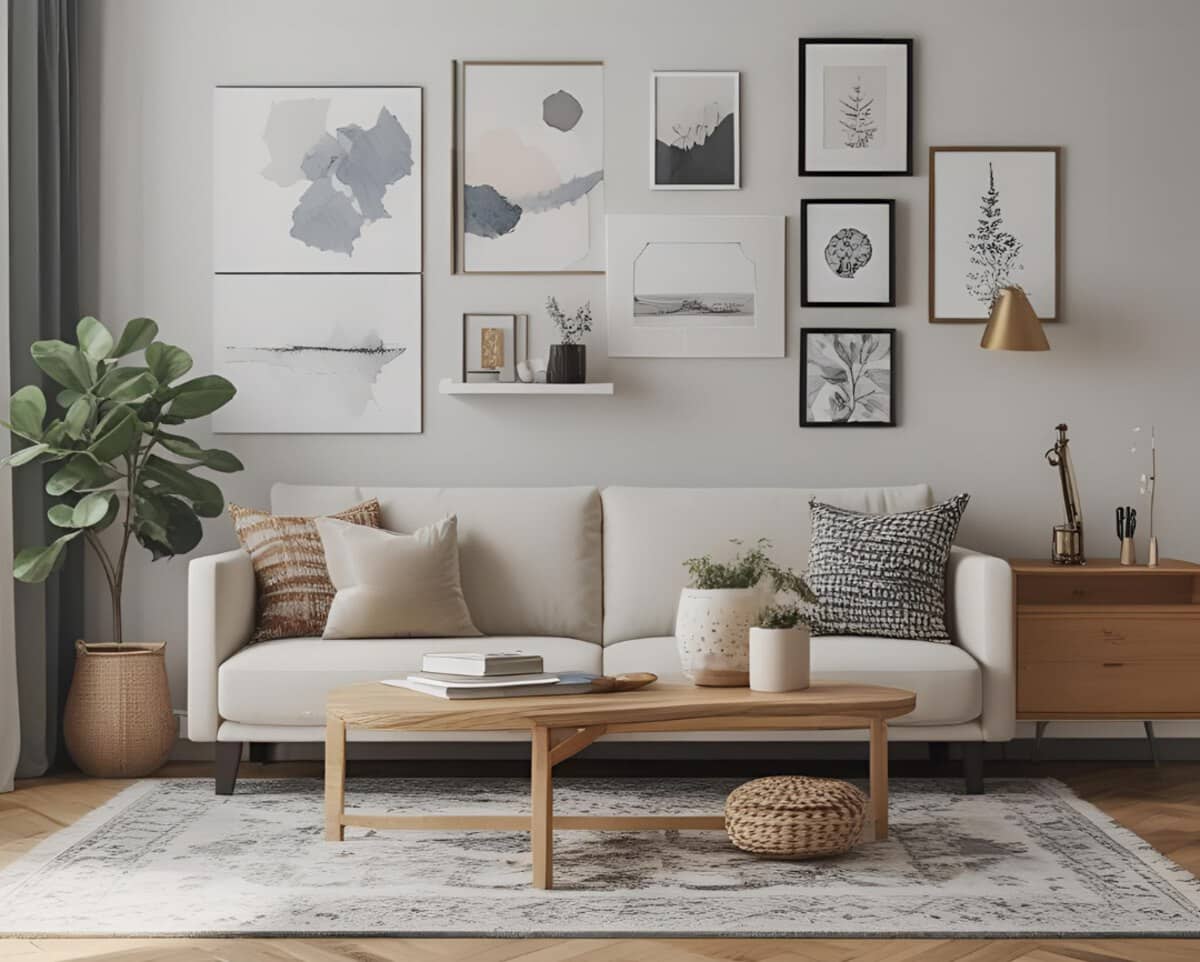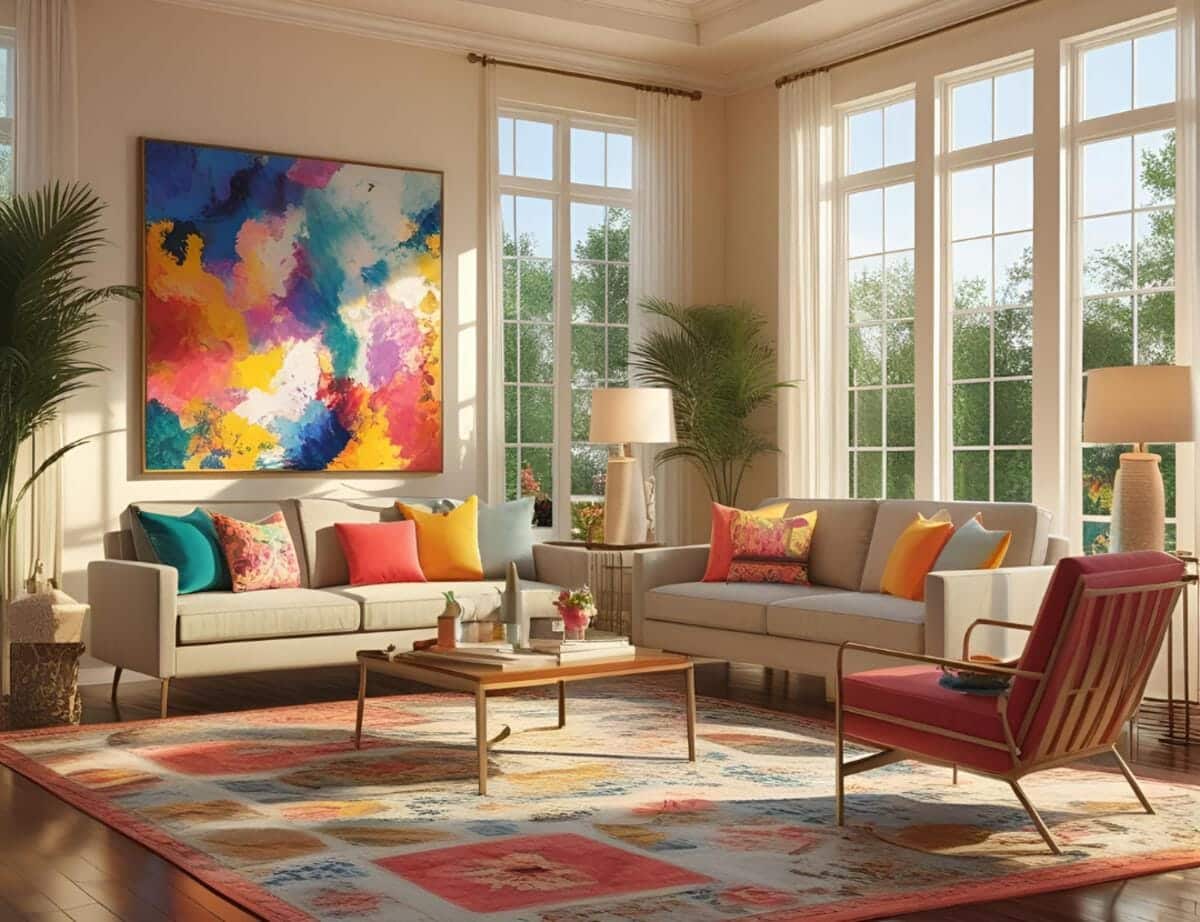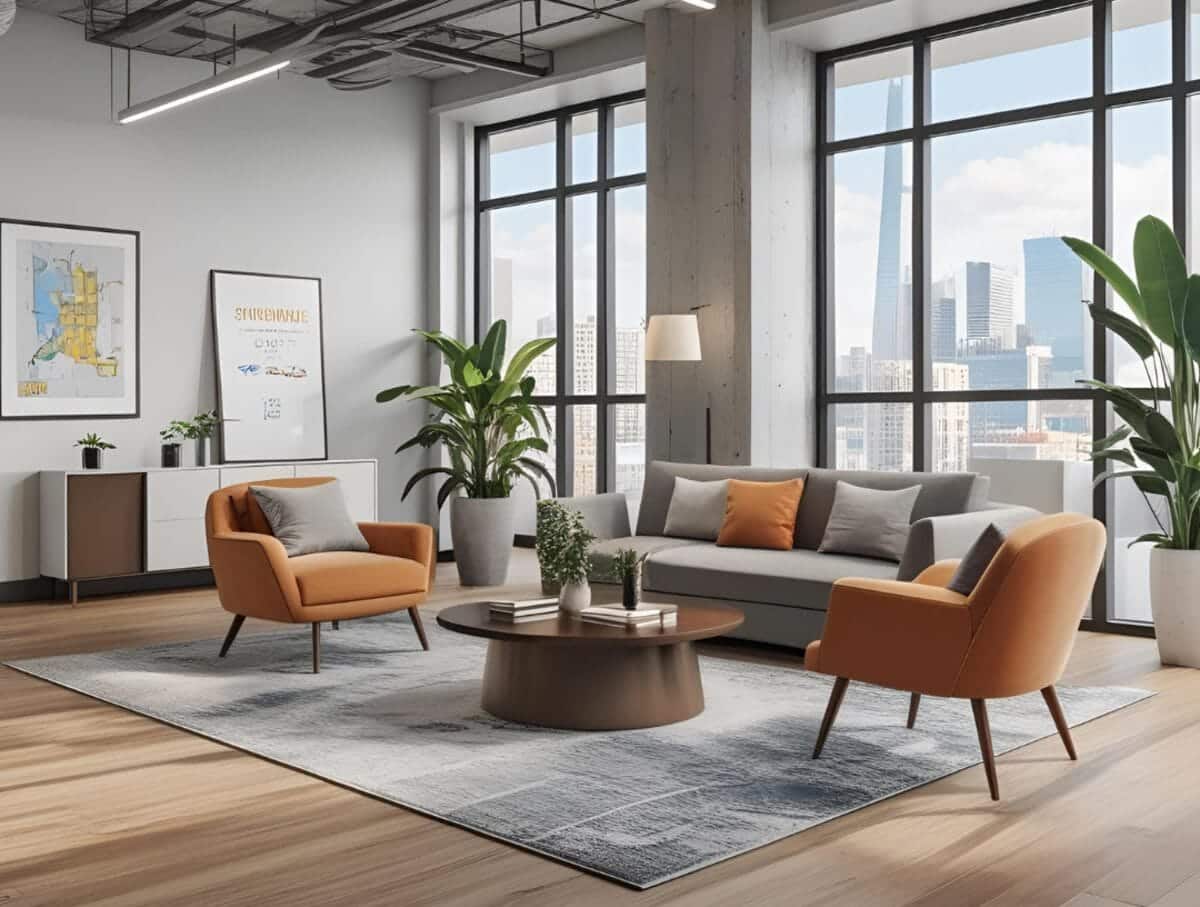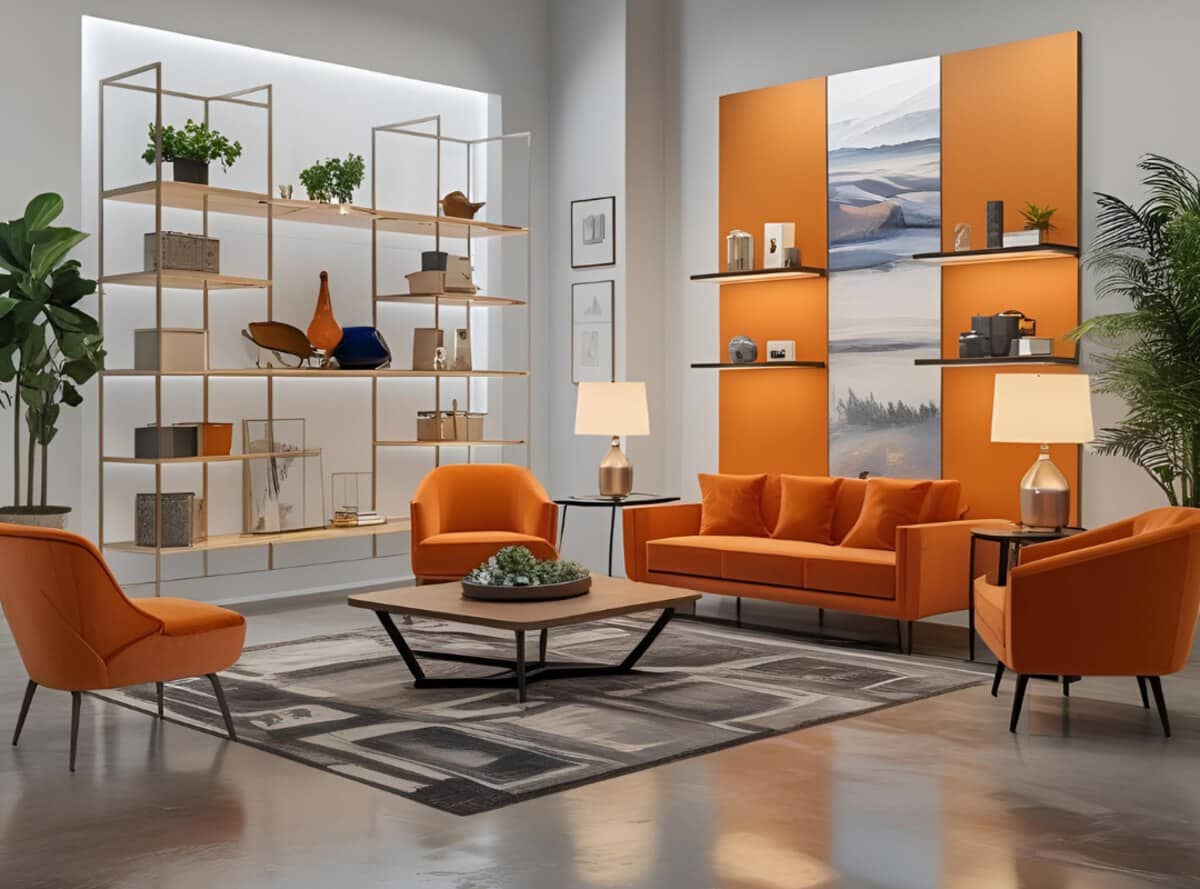Virtual staging (VS) is an online technique that uses computer-generated images to turn empty and outdated rooms into beautifully furnished and decorated spaces. Instead of bringing in furniture and accessories, virtual staging—as the name suggests—involves digitally inserting realistic furniture, rugs, lighting, and accessories into photos of empty rooms through software. This tool enables prospective buyers or renters to envision what a space might look like when furnished. Let’s learn more details about virtual staging.
What is virtual staging?
Virtual staging is also known as digital home staging. Typically, home staging involves renting furniture and decor to place in a home and then photographing and marketing it. This process may be costly, time-consuming, and not always convenient.
VS replaces these with digital images. Designers work with software to place furnishings and decor in photos of empty rooms. The images are realistic and can help potential buyers or renters imagine the space and understand its possibilities without needing to bring in their own furniture.
Virtual staging has become particularly important with the popularity of online home shopping. More than 90% of homebuyers start their search online, and virtually all say photos are the most important aspect of a listing. Apart from looking cold and unwelcoming, vacant rooms can make it difficult for buyers to envision themselves living there. Virtual staging solves that by showing the home in the best light.

How Does Virtual Staging Work?
The process of VS is quite simple:
- Photographs: The first step involves capturing high-resolution photos of empty rooms. These photographs need to be of good quality, clear, and well-lit to act as a good foundation.
- Design: With specialty software, virtual stagers introduce digital furniture, rugs, curtains, lighting, and decor. They thoroughly ensure the size, perspective, and lighting of the room match so the additions feel natural.
- Review: The staged shots are sent to the client for approval. Modifications are possible, whether new styles of furniture or color schemes.
- Final images: Once approved, the final shots will be incorporated into online listings, brochures, and marketing.
AI virtual staging, one of the newest of these, relies on artificial intelligence to automate certain aspects of staging. AI can easily add lifelike furniture and decor in images with little human work involved, so this is generally a faster and sometimes less expensive form of virtual staging.
What is AI virtual staging?
AI virtual staging is a more modern type of VS that leverages artificial intelligence to automatically and more quickly add furniture and decor to photos. Algorithms do the work of analyzing the space and placing digital furniture that fits the size and style of the room.
The benefits of AI staging are:
- Quicker Turnaround: AI can create staged images in minutes or hours rather than days.
- Reduced Prices: Automation significantly reduces the cost of staging labor.
- Many Styles to Choose From: AI can rapidly design different styles for the same space.
- Availability: There are AI virtual staging tools that homeowners and agents can access on their own, without having to hire a professional designer to do so.
I believe that virtual staging AI is revolutionary as it broadens the scope of virtual staging and accelerates the marketing process.

Benefits of Virtual Staging
VS is better than traditional staging for many reasons:
- Affordability: Traditional staging can be expensive, especially if the home takes months to sell. VS costs a fraction of the amount, typically $30 to $100 a room, and it is a one-time charge.
- Quick Turnaround: It takes days to set up and dismantle physical staging. Virtual staging expedites the listing process by completing it within 24 to 48 hours.
- Flexibility: Experiment with different furniture styles and arrangements without any extra cost. This caters to specific buyer tastes.
- No Physical Hassle: You don’t have to move furniture, clean up clutter, or worry about damage to the property.
- Better Marketing: Virtual staging will attract more online views and more showings for your listing. Houses with staged photos sell 73% faster, on average, than their unstaged counterparts.
- Great For Vacant or Older Homes: Empty rooms appear smaller and less attractive. When you virtually stage a home, it adds warmth and character to the space and can make it feel less cold and more functional.
- No Wear and Tear: Because there is no physical furniture, there’s no chance for scratches or damage when staging the home.
So, I do think these benefits make VS worth it. This is particularly beneficial for sellers and agents who aim to save time, save money, and still attract buyers.
Virtual Staging vs. Traditional Staging
| Feature | Traditional Staging | Virtual Staging |
| Cost | $2,000–$5,000+ per month | $30–$100 per room (one-time) |
| Setup Time | Several days | 24–48 hours |
| Flexibility | One style, hard to change | Multiple styles, easy to update |
| Physical Effort | Moving furniture, cleaning | None |
| Risk of Damage | Possible to floors/walls | None |
| Marketing Impact | Effective but costly | Equally effective, more affordable |
Virtual staging is faster, cheaper, and more flexible, making it a smart choice for many sellers and agents.
Niches Where Virtual Staging is Used
Real Estate

The largest use of VS is in the real estate market. Agents and sellers use it to market vacant homes, apartments, condos, and rentals. Most buyers look online, and gorgeous, furnished photos help listings pop.
VS allows buyers to visualize potential room uses, leading to an increase in interest and sales. In reality, homes with staged photos can sell up faster than those without staged photos, and if that’s not enough, these homes also sell for up to 20% more than unstaged homes. It is particularly handy when staging with physical furniture is prohibitively expensive, time-consuming, or impossible given location or timing.
Interior Design
VS allows interior designers to demonstrate how various styles of furniture and layouts will look inside a client’s home. This digital preview service allows clients to make decisions prior to purchase and beginning the renovation process.
With AI virtual staging, designers can churn out countless design options in no time and save time and improve client satisfaction.
Commercial Spaces

Businesses utilize virtual staging to present office space, retail stores, and other commercial property. VS also allows them to make these spaces appear functional and attractive without expensive physical staging.
A company that sells office space could, for example, use virtual staging to demonstrate how the area might be set up with desks, meeting rooms, and lounge areas.
Vacation rentals and the hotel industry
Owners of vacation rentals and hotels use virtual staging to make their properties look inviting online. Because many travelers book based on photos, virtually staged images can increase bookings by featuring a cozy, well-decorated room.
Corporate marketing & Showrooms
Some companies use virtual staging to develop digital showrooms for products. This enables visitors to see products in a real environment online, improving the shopping experience without a physical showroom.
Key points to remember about VS
While VS offers many advantages, there are several key points to consider:
- Quality Matters: Bad virtual staging with unrealistic furniture or bad lighting can be a turnoff to buyers. Make sure you always choose experienced designers or reputable AI tools.
- Disclosure: In a few markets, sellers are required to disclose when photos have been virtually staged to help avoid misleading buyers. I believe this is a must, to keep things honest.
- Not a Substitute for an In-Person Showing: VS is great for online marketing, but ultimately, buyers still want to see the property in person before making any decisions.
- Style Choices: Style of virtual staging should be consistent with the target market. For instance, contemporary furniture may not be attractive to those in search of traditional homes.
My Final Thoughts
I have seen how virtual staging transforms empty rooms into inviting spaces that attract buyers quickly. It’s a smart investment that saves money and time while improving marketing results. AI virtual staging, in particular, excites me because it makes the process even faster and more affordable.
I think VS will continue to grow in popularity as more sellers and agents realize its benefits. It’s a perfect example of how technology can improve traditional industries like real estate.
Before you leave, learn how AI answers are shaping the future of e-commerce customer service. And to share you experience about VS, please join us on Facebook, X (Twitter), or LinkedIn.
Sources:
- www.barqar.com/2015/07/23/92-of-home-buyers-use-the-internet-in-their-search/
- www.themortgagereports.com/18516/home-staging-mortgage-sale-craig-berry
- www.bramlettpartners.com/blog/maximize-your-sale-should-i-stage-my-home-to-sell
All images are AI-generated with canva.com



How to Turn Your Blog Into a Money-Making Machine (Even If You’re Just Starting)
How to Set Role-Based Pricing in WooCommerce (Wholesale & Retail)